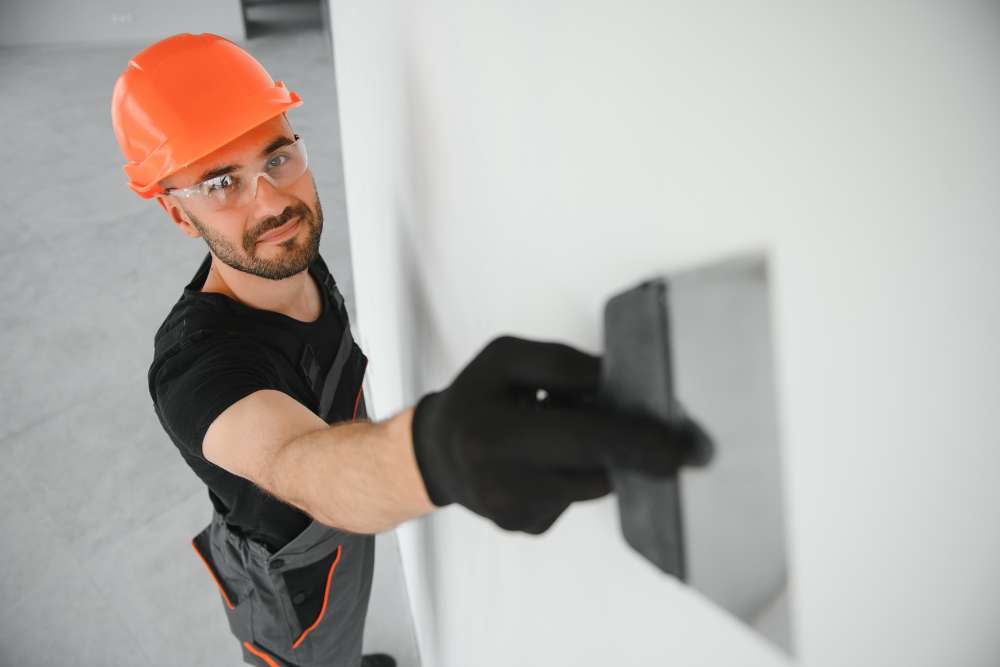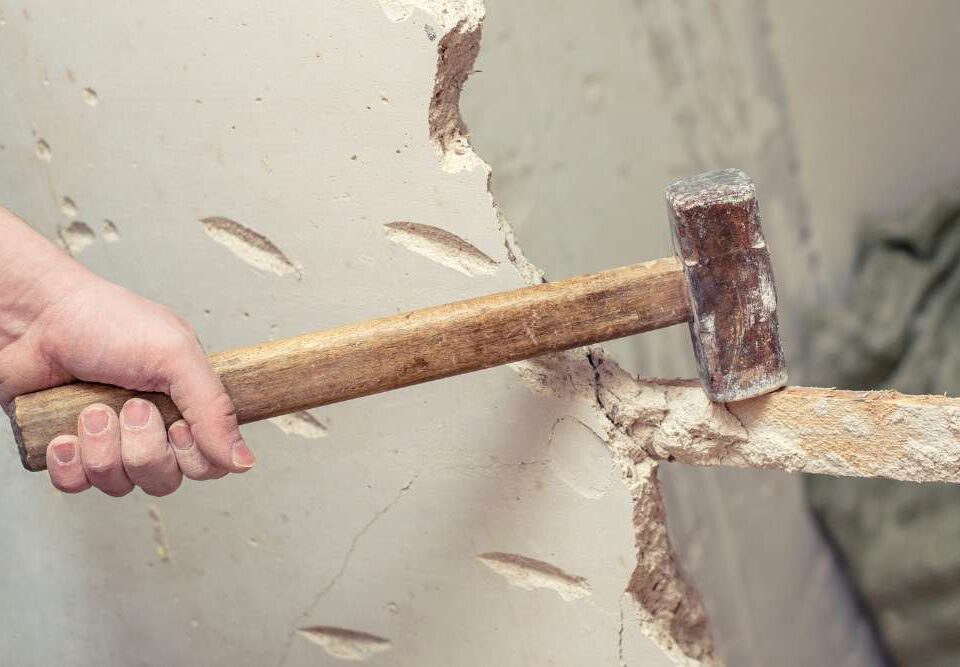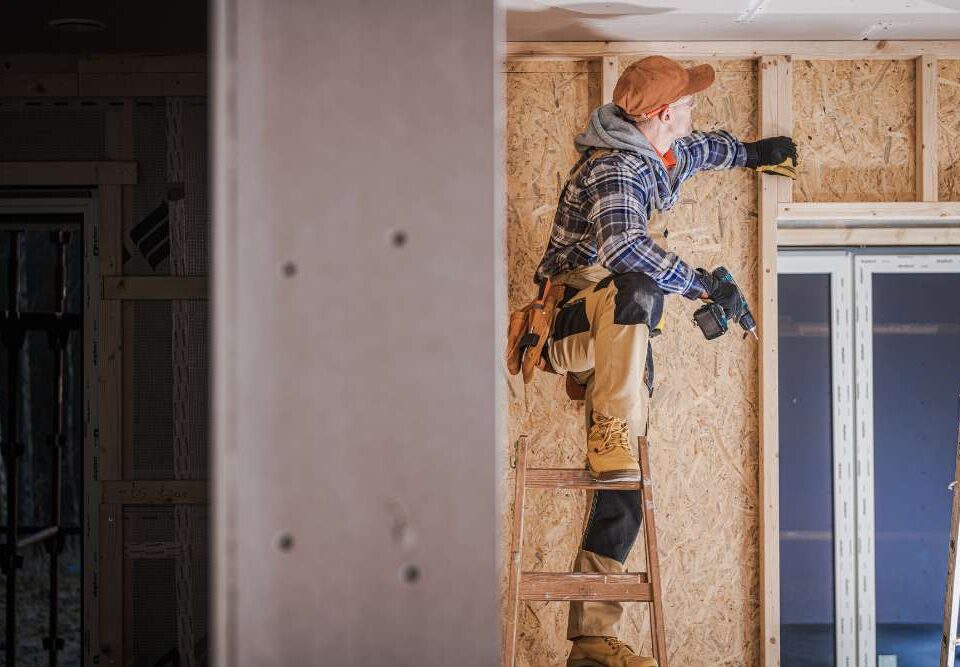
Demolition Cleanup Steps to Take After the Job is Done
September 10, 2025
Flooring Removal The Essential Steps
September 10, 2025How Drywall Removal Affects Home Renovations
When homeowners imagine a renovation, they often picture fresh paint, new flooring, or updated fixtures. Yet one step that quietly shapes the entire process is drywall removal. Taking down drywall might seem like a simple task, but it has ripple effects on design, budget, and overall construction plans. Whether revealing hidden structural issues or clearing the way for new layouts, drywall removal is more than just demolition—it is preparation. Without this step, many renovations cannot move forward effectively. Understanding its role ensures smoother projects and better long-term outcomes for any home improvement plan.
Preparing the space before drywall comes down
Preparation plays a critical role in any drywall removal project. Before even touching a tool, it’s important to clear the space of furniture, fixtures, and personal items. Dust and debris are inevitable during demolition, and protecting valuable belongings avoids costly accidents. Setting up plastic barriers or sealing off entryways helps limit the spread of dust into other parts of the home, keeping the rest of the space livable during renovation.
Another aspect of preparation involves addressing utilities. Electrical wiring, plumbing, and insulation often sit directly behind drywall. Identifying these systems in advance reduces the risk of damaging them during removal. By cutting power or shutting off water to the area, homeowners and contractors create a safer environment for the work. Proper preparation minimizes delays and ensures drywall removal progresses smoothly, setting the stage for the rest of the renovation to unfold without unnecessary complications.

Revealing hidden structural concerns
Drywall removal has a way of uncovering issues that no one expected. Behind those walls, homeowners may discover cracked studs, termite damage, or even mold growth. Left unnoticed, these problems can compromise safety and delay the renovation process. By taking down drywall, these concerns come to light early enough to address them properly before new construction begins.
Sometimes the issues are small, like minor insulation gaps or wiring that isn’t up to code. Other times, they reveal larger challenges that require significant repair. Although these discoveries may initially seem like setbacks, they ultimately save money and stress in the long run. Repairing hidden problems before building over them ensures a more stable and lasting renovation. In this way, drywall removal functions as a diagnostic tool, giving homeowners and contractors a clear view of what truly lies beneath the surface of the home.
Improving design flexibility during renovations
Once drywall is removed, possibilities for design expand dramatically. The empty wall frames create a blank canvas, allowing homeowners to visualize new layouts or open-concept spaces. This stage is often when creativity flourishes, as it becomes easier to reimagine a room’s function without barriers in the way. Whether it’s combining two smaller rooms or opening a kitchen to a living area, drywall removal clears the path for these transformations.
Beyond layout changes, drywall removal also enables updates to lighting or storage solutions. Adding recessed lighting, built-in shelving, or custom niches is far easier when the framework is exposed. By seeing the structure beneath, homeowners gain greater control over the design process. Rather than working around what already exists, they can shape the space to better fit their needs. This freedom is one of the biggest advantages of including drywall removal in renovation projects.
Managing debris and waste responsibly
Demolition generates a surprising amount of waste, and drywall is no exception. Sheets of gypsum, piles of dust, and leftover nails or screws can quickly overwhelm a renovation site if not handled properly. Effective waste management is key to keeping the project safe, efficient, and environmentally responsible. Bagging debris in smaller, manageable amounts helps maintain order and reduces safety hazards in high-traffic areas.
Disposal also requires careful planning. Many regions have specific guidelines for handling construction materials, and drywall often cannot be mixed with general household trash. Partnering with a professional service ensures that materials are removed responsibly, sometimes even recycled where facilities exist. By managing drywall debris effectively, homeowners protect the environment while keeping their renovation on track. This behind-the-scenes step is essential, though it often goes unnoticed compared to the more visible parts of remodeling.
The impact on electrical and plumbing updates
Removing drywall opens access to a home’s most important systems. Wiring and plumbing are often hidden within walls, and their condition can only be properly evaluated once the drywall is gone. This step creates the perfect opportunity to upgrade outdated wiring, add new outlets, or reroute plumbing lines for modern appliances. Without removing drywall, these improvements would be far more difficult or even impossible to achieve.
In addition to upgrades, drywall removal makes inspections easier for contractors. Identifying code violations or faulty installations early prevents major issues down the road. Renovations that incorporate new kitchens, bathrooms, or home offices especially benefit from this accessibility. By addressing electrical and plumbing needs during this stage, homeowners avoid future tear-downs and save on additional labor costs. In this way, drywall removal supports both immediate design goals and long-term functionality.
Addressing safety during the removal process
Drywall removal is not as harmless as it might appear. The process releases fine dust that can irritate lungs and skin, particularly for those with allergies or respiratory conditions. Safety equipment such as masks, goggles, and gloves becomes essential. Containing the dust with plastic sheeting and ensuring proper ventilation protects not only workers but also anyone else in the home.
Beyond dust, there are physical risks involved. Nails, sharp edges, or hidden wires can cause injuries if not handled carefully. Professional crews are trained to navigate these hazards efficiently, but even DIY enthusiasts must approach the task with caution. By prioritizing safety during drywall removal, homeowners protect themselves and prevent accidents that could halt the renovation entirely. It’s a reminder that even seemingly simple demolition requires respect for the risks involved.
Saving money through efficient removal
While drywall removal may seem like an added expense, efficient demolition can actually save money in the broader renovation process. Removing drywall carefully ensures minimal damage to studs and other structural elements, which reduces repair costs later. Taking time to protect existing materials also means less waste and fewer purchases of replacement supplies.
Additionally, by revealing hidden issues early, drywall removal prevents costly surprises later in construction. Instead of discovering a problem after new finishes are installed, contractors can address it immediately, keeping the project on budget. In some cases, doing the removal yourself can reduce labor costs, though it requires time, effort, and safety precautions. Whether done personally or with professionals, efficient drywall removal ultimately streamlines the renovation process, turning a seemingly destructive step into one that delivers real financial benefits.
Environmental benefits of recycling drywall
Drywall is one of the most widely used materials in construction, but it often ends up in landfills after removal. Recycling drywall helps reduce waste while also contributing to sustainable building practices. The gypsum core can be processed and reused in new drywall production, soil amendments, or even cement manufacturing. By recycling, homeowners reduce their project’s environmental footprint while supporting the circular use of resources.
Not all drywall can be recycled, particularly if it’s been exposed to moisture or contaminants. However, separating recyclable material from waste creates significant benefits. Professional junk removal services often have access to recycling facilities that handle drywall responsibly. Choosing this route transforms a waste-heavy step into an eco-conscious decision. For homeowners interested in greener renovations, recycling drywall is a small but meaningful way to align projects with environmental values.
Professional removal versus do it yourself
The decision between professional drywall removal and DIY depends on budget, time, and skill level. For small projects, homeowners may choose to tackle removal themselves, saving on labor costs. However, it’s a demanding job that produces heavy dust and requires careful handling to avoid damaging surrounding structures. Without proper preparation, a DIY approach can quickly become overwhelming.
Professional services bring efficiency, safety, and disposal expertise. Crews have the tools and experience to remove drywall cleanly, minimize dust spread, and handle waste responsibly. While hiring professionals involves upfront costs, it often saves time and ensures a smoother renovation overall. The choice ultimately rests on the scale of the project and personal comfort with labor-intensive tasks. For many, the convenience and reliability of professional services outweigh the challenges of attempting drywall removal alone.
Timing drywall removal within renovation plans
The sequence of steps in a renovation matters, and drywall removal is no exception. It typically occurs early in the process, right after initial planning and before major installations. Removing drywall too soon can leave a home exposed to dust and disruption, while waiting too long can delay essential updates to wiring or plumbing. Proper timing keeps the project moving in a logical, efficient order.
Contractors often use this stage to coordinate inspections, install updated systems, and prepare the framework for new materials. Once the drywall is gone, the skeleton of the room is revealed, creating the foundation for the renovation to progress. Strategic timing avoids unnecessary backtracking and ensures each step builds smoothly on the last. For homeowners, understanding this sequence provides clarity about why drywall removal is such a pivotal stage in the larger renovation journey.
Conclusion
Drywall removal shapes home renovations in more ways than most homeowners realize. It not only clears the way for design changes but also uncovers hidden problems, improves access to essential systems, and ensures safety and efficiency throughout the process. By managing debris responsibly and considering environmental recycling options, the removal step also reflects a commitment to sustainability. Whether done professionally or on a smaller scale by homeowners themselves, drywall removal remains a crucial foundation for successful remodeling.
North Bay Junk Removal, located in Santa Rosa, CA, offers expert drywall removal and junk removal services that simplify the renovation process. With a skilled team, they handle demolition safely, manage waste responsibly, and help homeowners prepare for the next stage of their projects. To schedule professional assistance, call 707-478-6817. Choosing North Bay Junk Removal ensures that this essential step is handled with care, efficiency, and respect for both your home and the environment.




